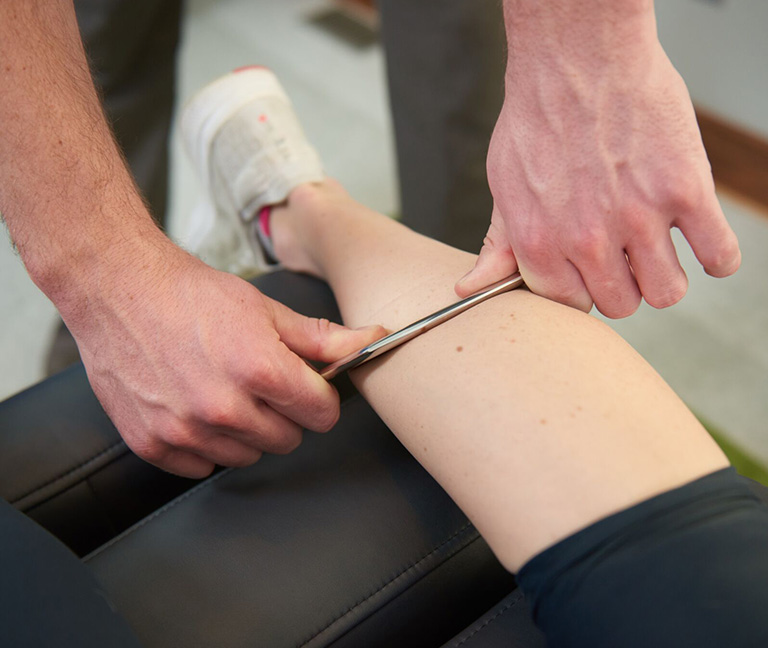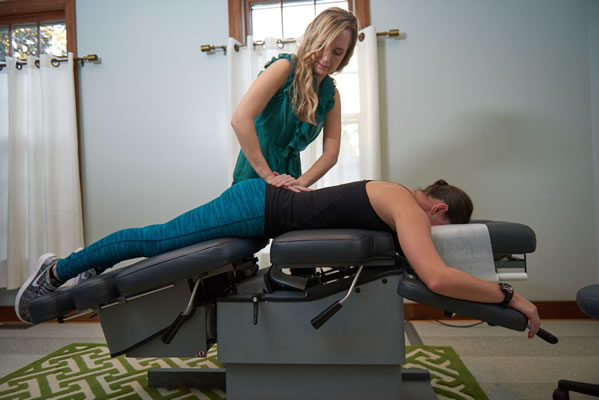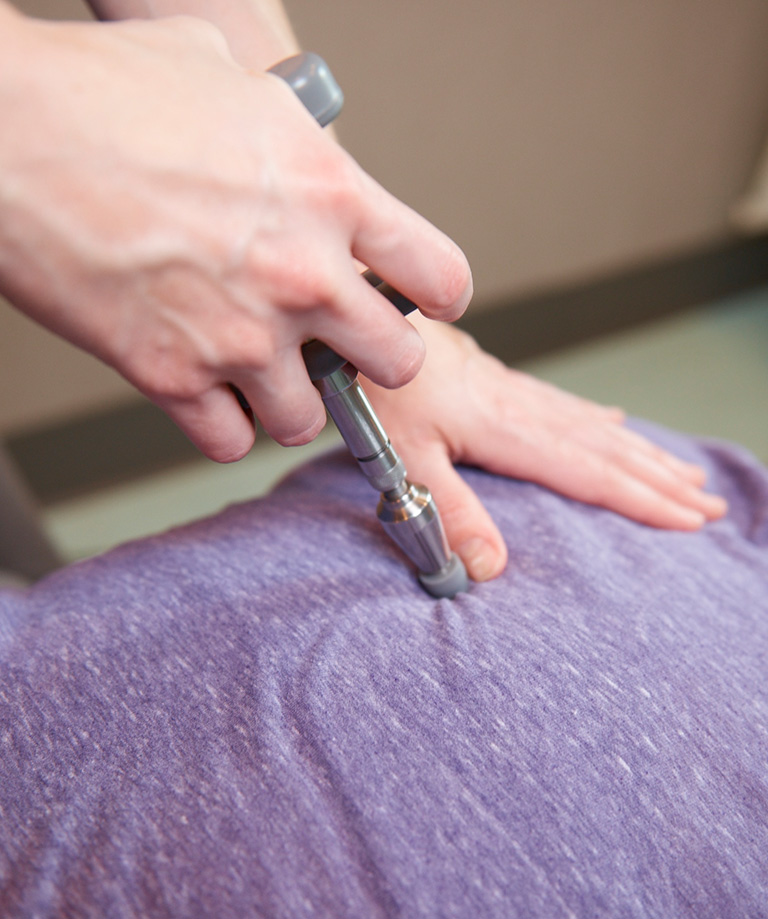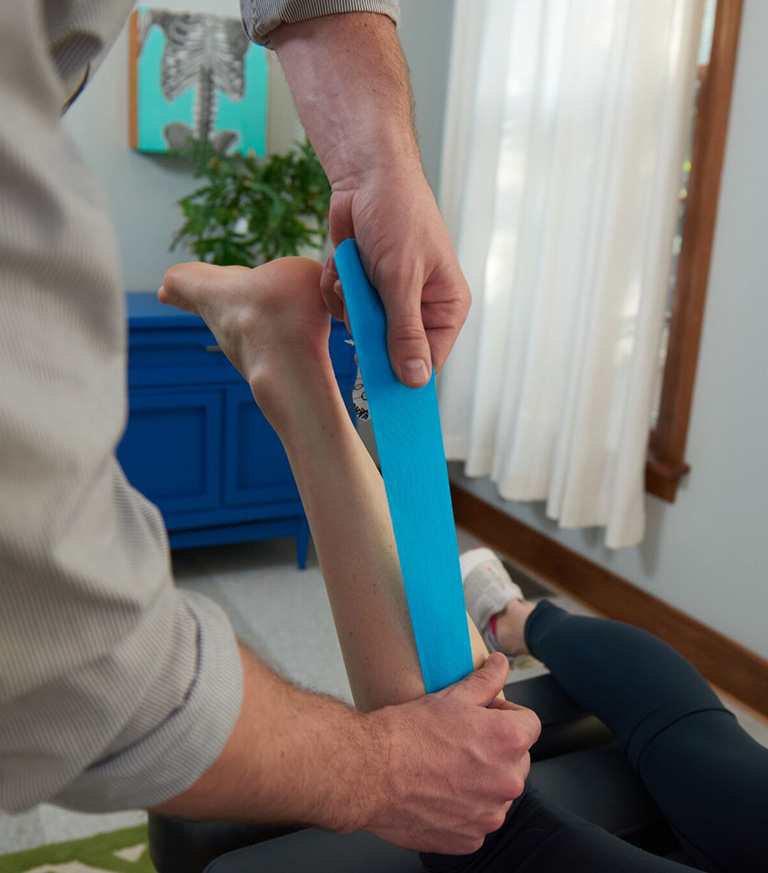CHIROPRACTIC CARE
Chiropractic
Doctors of Chiropractic – often referred to as chiropractors or chiropractic physicians – practice a drug-free, hands-on approach to health care that includes patient examination, diagnosis, and treatment. Chiropractors have broad diagnostic skills and are also trained to recommend therapeutic and rehabilitative exercises, as well as to provide nutritional, dietary and lifestyle counseling.


Chiropractic Adjustments
Adjustment Techniques
Diversified Technique
Diversified technique is widely-recognized as the most traditional hands-on approach to chiropractic adjustments. With this technique, the doctor uses his or her hands to put a low-force, high-velocity impulse into a joint. The patient may feel a “popping” or “clicking” sensation in his/her spine as the adjustment occurs. This is generally a relieving feeling and is usually not painful.
Thompson Technique
The Thompson chiropractic technique utilizes a chiropractic table that has several sections under the patient’s spinal column that gently drop down during an adjustment. During a Thompson adjustment, the chiropractor places a very specific directional tension into a joint while allowing that section of the table to drop slightly. This technique uses gravity to set the adjustment to the joint and provides a more gentle alternative to the twisting positions involved in traditional adjustments.

Activator Methods (Instrument adjusting)
Some patients are completely uncomfortable with the “twisting and popping” feel to traditional manual chiropractic adjustments. For those patients, the Activator Method of adjusting is a gentle, effective alternative. With this technique a small mechanical instrument is used to put a low-force impulse into a spinal joint. The tool provides a precise, highly-effective alternative to hands-on adjustments. For patients in acute pain or muscle spasm, this can be a great way to introduce healthy motion into joints while keeping the patient comfortable.
Flexion-Distraction
Flexion-Distraction is technique that uses rhythmic flexion of the lower half of the chiropractic table to assist the doctor in providing a deep stretch to the muscles of the lower back as well as decompression of the spinal structures in the lumbar spine. As the vertebrae are gently drawn into traction, negative pressure draws fluids back into the lumbar discs and takes pressure off of the nerves in the surrounding area. For patients who are seated for a majority of the day, this can be a very beneficial and relieving form of chiropractic therapy.
Other Modalities
Graston Technique / Instrument-Assisted Soft Tissue Mobilization (IASTM)
Graston is a unique, evidence-based form of instrument-assisted soft tissue mobilization that enables clinicians to effectively and efficiently address scar tissue and fascial restrictions in the muscles, ligaments, and tendons of the body. Scar tissue and fascial restrictions can be the result of overuse or injury and can present as conditions such as Achilles Tendinitis, IT Band Syndrome, rotator cuff syndrome, tennis elbow, etc.
Graston Technique involves the use of stainless steel instruments to deliver an effective means of manual therapy. Practitioners use the stainless steel instruments to comb over and “catch” on fibrotic tissue, which immediately identifies the areas of restriction. Once the tissue has been identified, the instruments are then used to address and treat the abnormal tissue by working through the area manually.
Selective Functional Movement Assessment (SFMA)
The SFMA is a clinical assessment for those who experience pain. It is a movement based diagnostic system which systematically finds the cause– not just the location — of pain by logically breaking down dysfunctional movement patterns in a structured, repeatable assessment.
What makes SFMA unique? SFMA is the first organized system that takes into account altered motor control – the inability to coordinate proper movements. This system allows clinicians to identify the correct problems – mobility versus motor control – to help create successful clinical outcomes. Widely viewed as the most respected and researched movement and assessment technique, the SFMA can help determine what caused your pain in the first place and what patterns in your body need to shift in order to avoid the same injury in the future.
Kinesio Tape
The Kinesio Taping Method is designed to facilitate the body’s natural healing process and is used to successfully treat a variety of orthopedic, neuromuscular, neurological and medical conditions. The elastic tape is applied to the skin of the patient over the affected area. The tape gently lifts the skin, promoting lymphatic drainage to reduce inflammation in the area. The tape also provides support and stability to the muscles and joints of the area, while allowing the patient to continue to go through a full range of motion. The tape is most effective when used in conjunction with manual or chiropractic therapy, and helps to gently reeducate the injured area to facilitate a healthy recovery.
Intersegmental Traction (IST) Table
Intersegmental traction is an effective chiropractic therapy that induces passive motion into the spine for the purpose of stretching spinal joints and increasing mobility. Intersegmental traction helps to gently and effectively reestablish normal range of motion to your spine. It also facilitates muscle relaxation to significantly reduce muscle spasms. For most patients, this is their favorite part of their visit.

Kinesio Tape
The Kinesio Taping Method is designed to facilitate the body’s natural healing process and is used to successfully treat a variety of orthopedic, neuromuscular, neurological and medical conditions. The elastic tape is applied to the skin of the patient over the affected area. The tape gently lifts the skin, promoting lymphatic drainage to reduce inflammation in the area. The tape also provides support and stability to the muscles and joints of the area, while allowing the patient to continue to go through a full range of motion. The tape is most effective when used in conjunction with manual or chiropractic therapy, and helps to gently reeducate the injured area to facilitate a healthy recovery.

Intersegmental Traction (IST) Table
Intersegmental traction is an effective chiropractic therapy that induces passive motion into the spine for the purpose of stretching spinal joints and increasing mobility. Intersegmental traction helps to gently and effectively reestablish normal range of motion to your spine. It also facilitates muscle relaxation to significantly reduce muscle spasms. For most patients, this is their favorite part of their visit.
